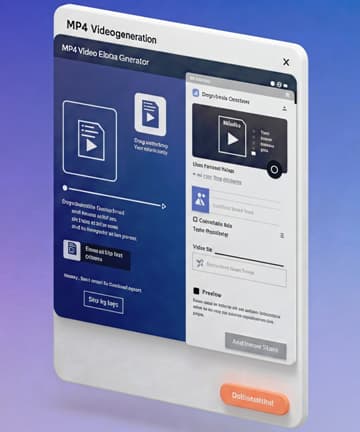Free Text Case Converter Online
Convert Your Text in a Flash: The Full Case Conversion Tutorial
Ever been left gazing at a clump of text that's printed out in ALL CAPS when you really wish it were in sentence case? Or perhaps you have a snappy title that must be prettified but you're not familiar with the capitalization conventions? The free text case converter online tool is your answer to these so-called formatting nightmares.
This simple yet effective tool obviates the tedium of retyping text by hand only to reverse its case. As a content writer, student, businessperson, or anybody dealing with text on a daily basis, learning how to utilize case conversion tools will save you hours and hours and give your work a clean and professional appearance.
What is this tool?
A case converter software is a software that changes text from different capitalization modes instantly. It is similar to having a personal formatting assistant that can switch back and forth from uppercase, lowercase, title case, and sentence case at the push of a button.
The converter tool that I have developed is more than simple conversion. It features real-time word count, word breakdown, and sentence count. You can simply paste text, translate it into your preferred form, and copy the output within seconds. It's so designed to work with anything from a single word to an entire paragraph without losing the original sense and structure.
What is special about this tool is that it's simple and dependable. You don't have to install programs or register accounts. You can use it directly within your web browser, it reads the text instantly, and you receive accurate results always.
How do you use it?
It is easy to use this case converter. Here's your step-by-step guide:
Begin by copying or typing your text into the input box. Any length of text, from a word to entire articles, is supported by the tool. When you input text, you'll see statistics filling in real-time with characters, words, sentences, and paragraphs.
Then, select your preferred type of conversion by pressing the relevant button. UPPERCASE changes all to uppercase letters, ideal for titles or highlighting. The lowercase button changes all to lower case letters, which can be helpful for some coding situations or aesthetic purposes.
The Title Case button capitalizes the first letter of every word upper case, the way standard title format guidelines are. It is great for headings, book or article titles. The Sentence case button simply capitalizes the first letter of every sentence, great for normal paragraph copy.
After you convert it, your converted text appears in the box below. You can look over it, make mental note of any further tuning you might need to do, and then click "Copy to Clipboard" to copy it where you can utilize it.
The statistics panel provides you with useful data regarding your text. Character count is useful when you are creating social media posts, which have character limits. Word count is helpful when writing scholarly texts or content. Sentence and paragraph counts help with readability analysis.
Why is it important?
Good text styling isn't creating pretty stuff – it's communication. Different situations require different case styles, and getting this wrong can make your content appear to be amateurish or difficult to read.
Think of social media updates. Some sites like ALL CAPS to draw attention, while others like sentence case for readability. Blog post titles typically employ title case to attract attention and by publishing convention. Email subject lines typically work better in sentence case because they sound more personal and less spammy.
Efficiency of time is also high on the list. It is time and labor consuming to type out text manually only to alter its case. You can copy and paste hundreds of words in a matter of seconds with this program and then concentrate on the content's quality as opposed to the mechanics of formatting.
The tool also gives consistency to your content. Whether you are running a blog, social media page, or business communication, consistent case style gives professional brand image. You can make all your titles in the same case style without having to verify each one individually.
It's also crucial to minimize error. When under pressure or exhausted and working to rush, it is simple to make capitalization errors. The tool prevents errors from being committed by applying form rules anywhere within your document.
Who can use it?
The tool is utilized by content creators and bloggers on a daily basis for headlines, article title formatting, and social media updates. They have to change between various types of cases based on content and the website. Such a tool provides a professional appearance for their content on all websites.
It is useful to students and researchers in essay, research paper, and citation writing. Academic writing has specific requirements in terms of formatting, and proper cases are essential to meet these requirements. The tool is used to make titles, headings, and references meet the right conventions.
Social media administrators have to handle various sites that have varying expectations in terms of format. What is effective on Twitter may not be effective on LinkedIn. The tool of utility assists them in restructuring the same content for various audiences but keep it active and professional.
It is used by business professionals in emails, presentations, and marketing emails. Company communication needs to have a standardized format, and this tool ensures the uniformity of the format in all the business documents.
Authors and editors are great about instant formatting corrections while proofread. They can try various case styles to determine the most suitable for their work without having to re-type.
Programmers and developers at times have to copy variable names, comments, or documentation from one case style into another. This tool spares them the drudgery of doing it by hand.
Even occasional users consider it convenient to use for home tasks like making invitations, centering lists, or formatting documents to print.
Getting the Most Out of Your Text Formatting
The real power of this resource is understanding when to use each case style. Uppercase is wonderful when you have a short, grab-your-attention phrase or when you're trying to assert something strongly. Just beware – too much utilization of the uppercase appears aggressive or goofy.
Lowercase is most suitable for creative writing, informal communications, or where you have to compose in a relaxed, informal tone. It is also useful for technical use where case sensitivity is not an issue.
Title case is your best choice when composing headings, article headings, and official notifications. It gives a professional look and adheres to standard publishing guidelines.
Sentence case will be optimum for day-to-day writing and larger copy. It is easily readable and will not fatigue the eyes like too much use of upper case writing.
The statistics feature is a bonus in that it allows you to better comprehend your text. Utilize character counts for social media optimization, word counts for search engine optimization purposes, and sentence counts to enhance readability.
Remember that good formatting serves to strengthen your message rather than distract from it. Your intention should be to make your content as readable and engaging as posible for your intended audience.
This text conversion program does all the work for you so you can concentrate on developing interesting content. Whether you're composing that ideal tweet, structuring a business proposal, or even preparing school work, having trusty text conversion as an option makes writing the whole process simpler and faster.





